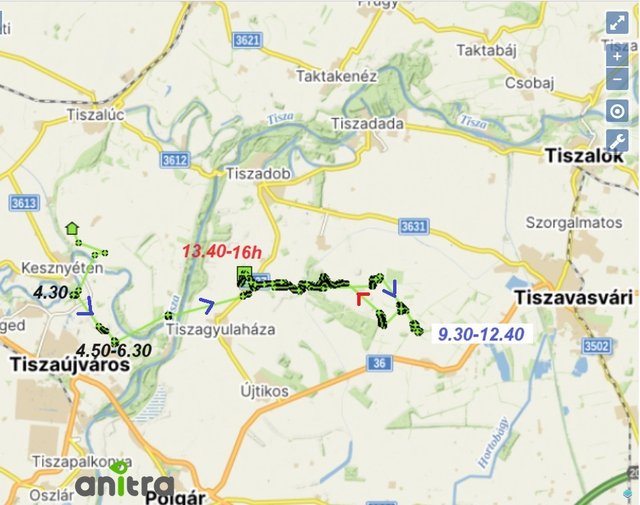Krum flew there already on May 25 between 9 and 10h UTC (
viewtopic.php?p=32854#p32854) - it is the "
Kesznyéteni Landscape Protection Area" (west bank of the Tisza river)
"The water managements hit the countryside hard, its swamps and meadows are gradually drying because they have broken away from the floods of the Tisza. In the future, in order to protect natural values, it will need to be reconstructed and landscape rehabilitation.
There are 14 different valuable plant associations and 58 valuable plant species, of which 25 are protected. Hard-walled bogs, floating bogs and primordial morts are especially important. There are 50 protected species in the area. Its bird world is extremely rich, 181 species of birds breed or pass through here regularly.
These natural values are highly endangered, and without active intervention, they are expected to be completely destroyed within 10-20 years. Therefore, in the district only traditional farming, grazing and grassland management are allowed, which meets the interests of the majority of the producers in Kesznyéten. In recent years, the indigenous Hungarian animal breeds have been successfully maintained in the area." http://kesznyeten.hu/tajvedelmi.php - photos
more (photos too)
https://www.bnpi.hu/en/kesznyeteni-tajvedelmi-korzet
- it is Natura 2000 area - IBA area: "A valuable alluvial plain surrounded by the Tisza and Sajó rivers. It is characterised by oxbows, riparian fen meadows with valuable euhydrophite vegetation and willow shrubs, sporadic salinifying meadows, soft and hardwood riverine woodland remnants. There are extensive plough-lands and hybrid poplar plantations. The ornithological significance of the area is due primarily to the presence of Ardeidae (night heron, squacco heron, little bittern, little egret and great white egret) settling in reed beds and willow woodlands. There are also riparian woodland species (black stork, black kite), aquatic species (ferruginous duck, terns, crakes) and meadow species (corncrake, sandpiper). The area is an important migration route."
https://natura2000.eea.europa.eu/natura ... UBN10005#4)
















